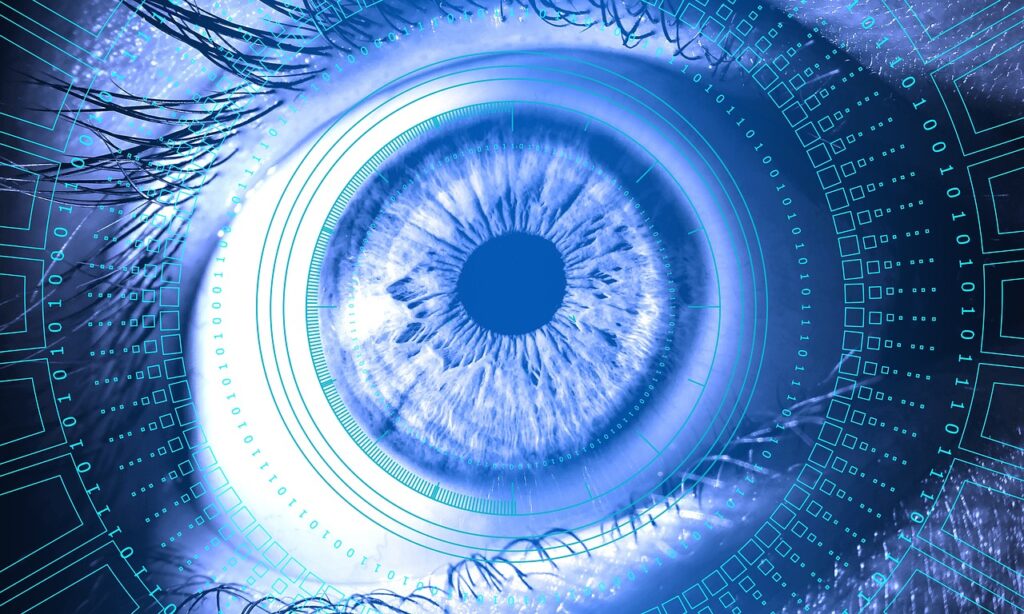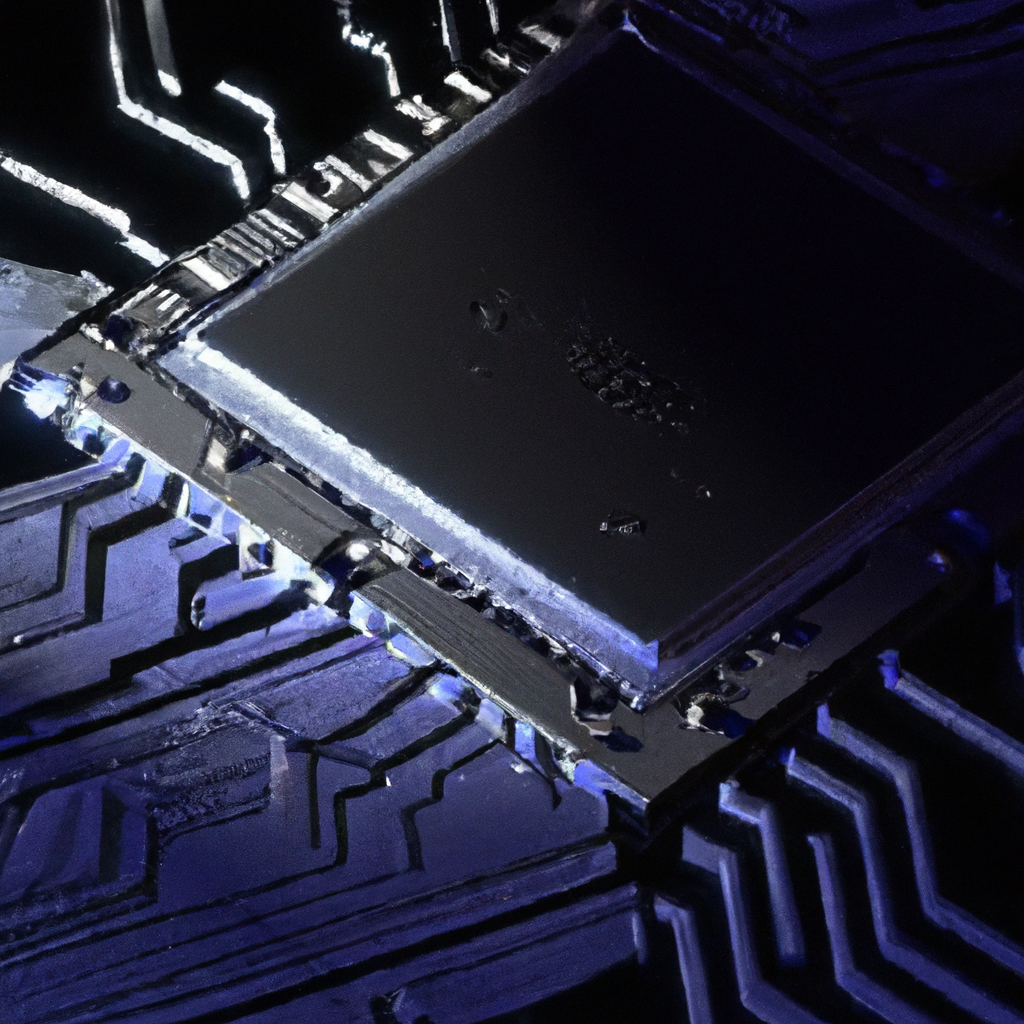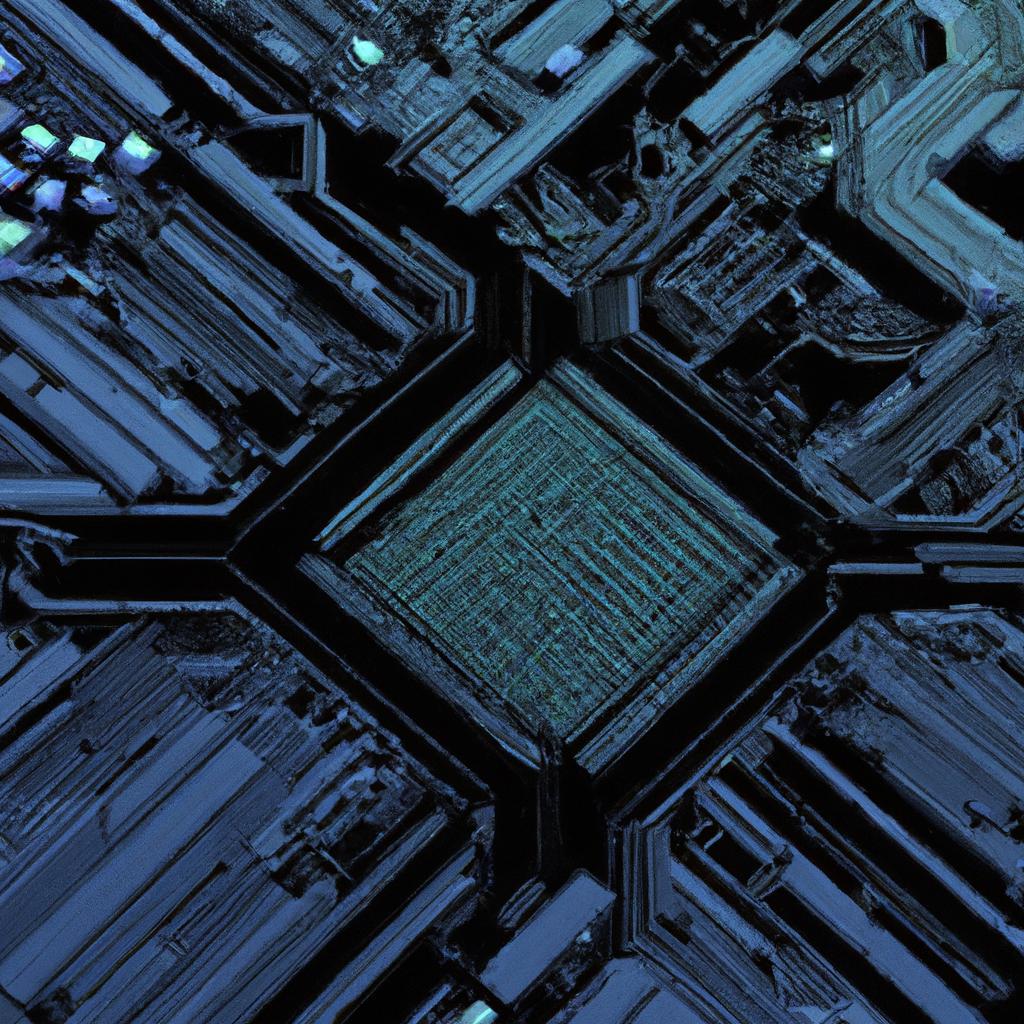Imagine a world where computers are not just powerful, but unimaginably fast. It’s 2050 and technology has catapulted us into a future that was once only a subject of science fiction. But how fast will computers really be in 2050? The possibilities are mind-bending. From lightning-fast processing speeds to instantaneous data transfers, the future of computing holds the potential to revolutionize industries, transform our daily lives, and leave us in awe of the capabilities that lie ahead. Buckle up as we take a glimpse into the exciting world of computer speeds in 2050.

This image is property of pixabay.com.
Improvements in Processing Power
Advancements in semiconductor technology
In the next few decades, we can expect significant improvements in processing power due to the advancements in semiconductor technology. Semiconductors are the foundation of modern computing, and as technology progresses, the size of transistors, which are the building blocks of semiconductors, continues to shrink. This allows for more transistors to be packed onto a single chip, resulting in increased processing power. Additionally, advancements in materials and manufacturing processes are expected to push the limits of semiconductor technology even further.
Emergence of quantum computing
Another exciting development in processing power is the emergence of quantum computing. Unlike classical computers that use bits to process information, quantum computers use quantum bits or qubits. Qubits have the ability to exist in multiple states simultaneously, allowing quantum computers to perform vastly more calculations than classical computers. While still in its early stages, quantum computing shows promise for solving complex problems that are currently computationally infeasible.
Development of neuromorphic computing
Neuromorphic computing is a field of study that aims to create computer systems inspired by the human brain. By mimicking the structure and functioning of the brain’s neural networks, neuromorphic computers can potentially achieve processing capabilities that surpass traditional computing systems. This approach to computing could revolutionize tasks such as pattern recognition, sensory processing, and decision making. Continued advancements in neuromorphic computing hold the potential to greatly enhance overall processing power and efficiency.
Enhancements in Storage
Evolution of solid-state drives (SSDs)
Solid-state drives (SSDs) have already made a significant impact on storage technology, and their evolution is expected to continue in the coming years. SSDs use flash memory instead of spinning disks, resulting in faster access times, improved reliability, and reduced power consumption. As technology improves, SSDs will become even faster and more efficient, making them the preferred choice for storing large amounts of data in various applications, from personal computers to data centers.
Innovations in non-volatile memory
Non-volatile memory, which retains data even when the power is turned off, is an area of ongoing innovation. Traditionally, non-volatile memory was limited to technologies like hard disk drives and flash memory. However, advancements in materials science and nanotechnology have led to the development of new types of non-volatile memory, such as resistive random-access memory (RRAM) and phase-change memory (PCM). These emerging technologies offer faster read and write speeds, better endurance, and higher capacity, ultimately enhancing the storage capabilities of future computing systems.
Introduction of DNA-based storage
One of the most intriguing developments in storage technology is the concept of DNA-based storage. DNA has the potential to store vast amounts of data in a compact and durable format. Researchers have successfully encoded and retrieved data in DNA, and the technology is projected to improve over time. DNA-based storage holds the promise of long-term data preservation and could revolutionize the way we store and retrieve information in the future.

This image is property of pixabay.com.
Advances in Data Transfer
Implementation of 5G networks
The implementation of 5G networks will bring about significant advancements in data transfer speeds and network capacity. With 5G technology, data can be transmitted at speeds of up to 10 gigabits per second, enabling faster downloads, seamless streaming, and low-latency connections. The increased bandwidth and reduced latency of 5G networks will pave the way for new applications and services that require real-time data transfer, such as autonomous vehicles, smart cities, and telemedicine.
Integration of Li-Fi technology
Li-Fi, or light fidelity, is a wireless communication technology that uses visible light to transmit data. By modulating the intensity of LED lights, Li-Fi can achieve high-speed data transfer rates that are several times faster than traditional Wi-Fi. The integration of Li-Fi technology alongside existing wireless communication technologies will enhance data transfer capabilities, especially in areas with high data density such as offices, hospitals, and public spaces. Li-Fi has the potential to revolutionize the way we connect to the internet and transfer data wirelessly.
Exploration of terahertz communication
Terahertz communication is a promising area of research that aims to utilize the terahertz frequency range for wireless data transfer. Terahertz waves have the potential to offer extremely high data transfer rates, surpassing even the capabilities of 5G networks. However, there are technical challenges to overcome, such as the absorption of terahertz waves by the atmosphere and the development of efficient terahertz transmitters and receivers. Despite these challenges, the exploration of terahertz communication holds immense potential for future data transfer advancements.
Breakthroughs in Artificial Intelligence
Advancement in machine learning algorithms
Machine learning algorithms are the backbone of artificial intelligence (AI) systems, and continuous advancements in this field are fueling the growth of AI applications. As more data becomes available, machine learning algorithms can be trained to make predictions, recognize patterns, and perform complex tasks with increasing accuracy. The advancement in algorithms, coupled with improvements in computational power, will enable AI systems to become smarter and more capable, paving the way for transformative technologies and applications.
Evolution of natural language processing
Natural language processing (NLP) is a subfield of AI that focuses on enabling computers to understand, interpret, and generate human language. NLP has already made significant strides, with voice assistants and language translation systems becoming increasingly accurate and natural-sounding. As the field continues to evolve, we can expect NLP systems to become more proficient in understanding context, emotions, and nuances in human language, leading to more seamless human-computer interactions and enhanced language-based applications.
Development of personalized AI assistants
Personalized AI assistants, also known as virtual assistants, are becoming more prevalent in our daily lives. These AI-powered systems can perform various tasks, such as managing schedules, answering queries, and even controlling smart home devices. With advancements in AI, personalized AI assistants will become more intuitive, adaptive, and capable of understanding and catering to individual needs. These assistants will play an even more significant role in our lives, becoming reliable companions for productivity, convenience, and entertainment.

This image is property of pixabay.com.
Integration of Virtual Reality and Augmented Reality
Enhanced visual and auditory experiences
Virtual reality (VR) and augmented reality (AR) technologies are transforming the way we experience and interact with digital content. VR provides immersive experiences by fully replacing the real world with a virtual environment, while AR enhances the real world by overlaying digital information onto the physical environment. Advancements in VR and AR will continue to improve the visual and auditory fidelity of these technologies, creating more realistic and captivating experiences. From gaming and entertainment to education and training, VR and AR have the potential to revolutionize various industries.
Implementation of haptic feedback technology
Haptic feedback technology simulates the sense of touch by providing tactile sensations and force feedback. In the context of VR and AR, haptic feedback enhances the immersion and realism of virtual interactions. Advancements in haptic feedback technology will enable more precise and realistic tactile feedback, allowing users to feel textures, vibrations, and even forces in virtual environments. This will greatly enhance the overall virtual experience and enable new applications in areas such as virtual training, remote surgery, and rehabilitation.
Integration of AR glasses in daily life
AR glasses, also known as smart glasses, are wearable devices that overlay digital information onto the user’s field of view. While early iterations of AR glasses have faced limitations in terms of size, weight, and battery life, ongoing advancements are addressing these challenges. Future AR glasses are expected to be sleeker, more lightweight, and offer longer battery life. The integration of AR glasses into our daily lives will enable hands-free access to information, real-time navigation, and personalized augmented experiences, transforming the way we interact with the physical world.
Expansion of Internet of Things (IoT)
Increased connectivity and automation
The Internet of Things (IoT) refers to the network of interconnected devices that can collect and exchange data. As technology advances, we can expect the expansion of IoT to bring about increased connectivity and automation. IoT devices, ranging from smart home devices to industrial sensors, will become more widespread and interconnected, enabling seamless data sharing and automation of various processes. This increased connectivity and automation will lead to improved efficiency, convenience, and real-time insights across numerous domains.
Development of smart cities
Smart cities are urban areas that leverage IoT technologies to improve the quality of life for their residents. By integrating various systems, such as transportation, energy, and public services, into a cohesive network, smart cities can optimize resource utilization, enhance public safety, and improve overall sustainability. The development of smart cities will require the deployment of IoT devices on a large scale, creating a network of sensors and connected infrastructure that will enable data-driven decision making and efficient urban management.
Integration of IoT in healthcare
The integration of IoT in healthcare has the potential to revolutionize the way medical services are delivered. IoT devices can monitor patients’ vital signs, collect data on their health conditions, and facilitate remote consultations and treatments. This enables proactive healthcare management, early detection of medical emergencies, and personalized interventions. With the widespread adoption of IoT in healthcare, patients can receive better care, healthcare providers can operate more efficiently, and overall healthcare outcomes can be significantly improved.

Advancements in Robotics
Development of autonomous robots
Autonomous robots are robotic systems that can perform tasks independently, without human intervention. Significant advancements in robotics are expected to lead to the development of highly autonomous robots capable of navigating complex environments, making intelligent decisions, and interacting with humans. From self-driving cars and delivery drones to industrial robots, autonomous robots will increasingly become a part of our daily lives, revolutionizing industries, enhancing productivity, and enabling new services.
Integration of AI in robotics
The integration of AI technologies in robotics is a driving force behind advancements in robotic capabilities. By combining AI algorithms with sensor data and real-time decision-making systems, robots can adapt to dynamic environments, learn from their experiences, and perform tasks with increasing efficiency and accuracy. The integration of AI in robotics will enable robots to understand and respond to human commands, recognize objects and faces, and collaborate seamlessly with humans in various domains, ranging from manufacturing and healthcare to exploration and entertainment.
Progress in soft robotics
Soft robotics is a subfield of robotics that focuses on the development of robots made from flexible and deformable materials. Soft robots have the advantage of adaptability, allowing them to navigate complex environments, interact with fragile objects, and mimic natural movements more effectively than their rigid counterparts. Ongoing research in soft robotics is expected to lead to the creation of robots that can perform delicate tasks, navigate confined spaces, and interact safely with humans. These advancements will expand the range of applications for robotic systems and open up new possibilities in fields such as healthcare, search and rescue, and exploration.
Green Computing Solutions
Focus on energy-efficient hardware design
As the demand for computing power continues to grow, energy efficiency has become a critical consideration in hardware design. Manufacturers are investing in research and development to create processors, memory modules, and other components that consume less power while maintaining high performance. From low-power processors and energy-efficient display technologies to optimized cooling systems, the focus on energy efficiency will help reduce the carbon footprint of computing systems and enable more sustainable operations.
Utilization of renewable energy sources
The increasing adoption of renewable energy sources, such as solar and wind power, is driving the transition towards greener computing solutions. Data centers, which consume a significant amount of energy, are exploring renewable energy options to power their operations. By utilizing solar panels, wind turbines, and other renewable energy sources, computing facilities can reduce their dependence on fossil fuels, decrease their environmental impact, and contribute to a more sustainable energy future.
Implementation of smart grids
Smart grids, which are intelligent electricity distribution networks, play a crucial role in promoting green computing solutions. By integrating advanced sensors, communication technologies, and automation, smart grids enable efficient monitoring and control of energy usage. This allows for optimized energy distribution, load management, and demand response, resulting in reduced energy waste and increased overall efficiency. The implementation of smart grids will facilitate the integration of renewable energy sources and support the growth of sustainable computing practices.

Security and Privacy Concerns
Addressing vulnerabilities in AI systems
With the increasing reliance on AI systems, ensuring their security and addressing vulnerabilities becomes a critical concern. AI systems can be vulnerable to malicious attacks, such as adversarial examples that manipulate inputs to deceive the system or data poisoning attacks that compromise the learning process. Researchers and developers are actively working on developing robust and secure AI algorithms that can detect and mitigate these vulnerabilities, making AI systems more trustworthy and resilient against potential threats.
Ensuring data protection and privacy
As computing systems become more interconnected and collect vast amounts of data, ensuring data protection and privacy becomes paramount. With the implementation of data protection regulations, such as the General Data Protection Regulation (GDPR), organizations are required to adopt security measures to safeguard personal data. Encryption, anonymization, and secure data transfer protocols are some of the techniques used to protect sensitive information. Ongoing advancements in security and privacy technologies will continue to strengthen data protection practices and preserve user privacy in an increasingly interconnected world.
Development of quantum-resistant cryptography
The development of quantum computers brings both exciting possibilities and security concerns. While quantum computers offer unprecedented processing power, they also pose a threat to traditional cryptographic systems that rely on the computational difficulty of certain mathematical problems. To mitigate this risk, researchers are developing quantum-resistant cryptographic algorithms that can resist attacks from quantum computers. By implementing these new algorithms, data can remain secure even in the face of future advancements in quantum computing.
Ethical and Social Implications
Impact on employment and workforce
Advancements in technology, such as AI and robotics, have the potential to reshape the job market and impact employment opportunities. While these technologies can automate repetitive tasks and enhance productivity, there are concerns about the displacement of human workers. However, it is important to note that technological advancements also create new job opportunities and roles that require human skills, such as creativity, critical thinking, and emotional intelligence. Effective training and education systems will play a crucial role in preparing the workforce for the changing job landscape.
Ethical considerations in AI decision-making
As AI systems increasingly make decisions that have significant implications, ethical considerations become essential. The decisions made by AI may impact individuals’ privacy, autonomy, and well-being. Ensuring transparency, accountability, and fairness in AI decision-making is crucial to building trust in these systems. There is ongoing research and discourse on ethical frameworks and guidelines for AI development to address issues such as bias, discrimination, and the responsible use of AI technology.
Cybersecurity challenges and implications
The rapid advancements in technology also bring about increased cybersecurity challenges. As more devices become connected and data becomes more valuable, the risk of cyber attacks and data breaches rises. It is critical to implement robust cybersecurity measures to safeguard networks, systems, and sensitive information. This includes strategies such as regular software updates, encryption, multi-factor authentication, and employee training. The development of cutting-edge cybersecurity solutions and collaboration among industry, government, and academia will be essential in addressing the evolving threat landscape.
In conclusion, the future of computing holds immense potential for advancements in processing power, storage, data transfer, artificial intelligence, virtual and augmented reality, Internet of Things, robotics, green computing, security, and ethics. These advancements will shape the way we live, work, and interact with technology. While there are challenges and concerns to address, the continuous progress in these areas will pave the way for a more connected, intelligent, and sustainable future.
